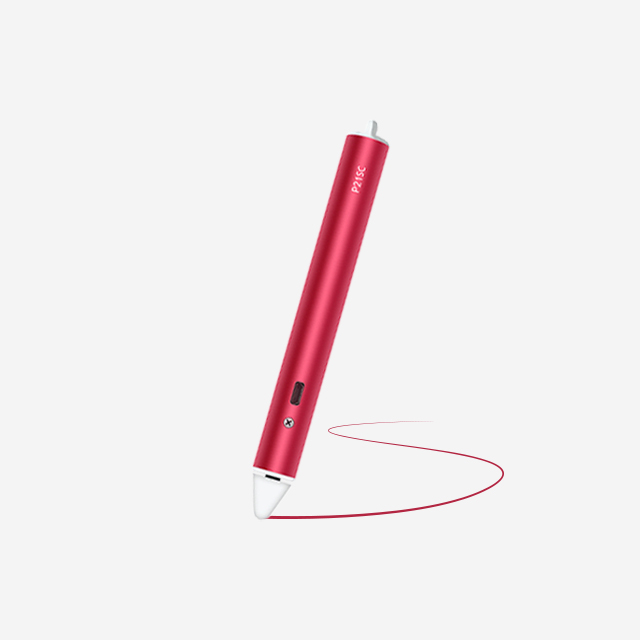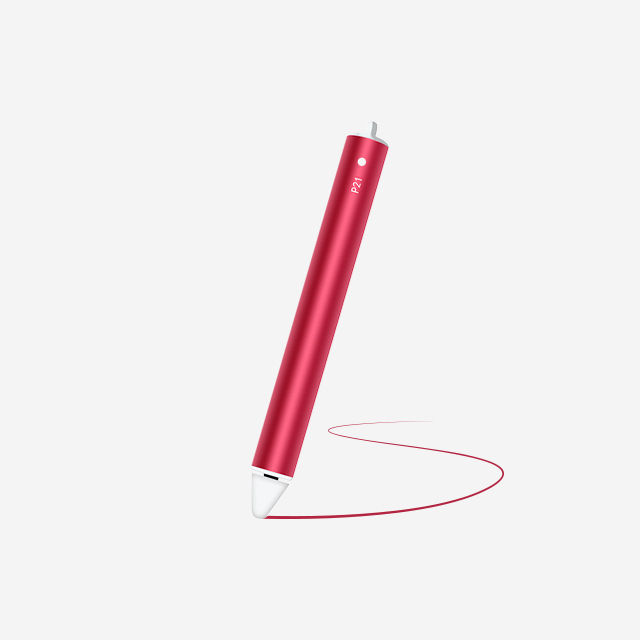- All
- Product Name
- Product Keyword
- Product Model
- Product Summary
- Product Description
- Multi Field Search
English
Views: 0 Author: Site Editor Publish Time: 2025-10-20 Origin: Site










Are traditional teaching methods holding students back? Interactive infrared pens are changing the classroom experience. These innovative tools enhance engagement and collaboration in learning environments.
In this post, we’ll explore how interactive infrared pens work and their growing importance in modern education. You’ll learn about their features, benefits, and why they are a smart investment for educational businesses.
Interactive infrared pens are innovative tools designed to enhance classroom learning. They function by using infrared technology to interact with digital surfaces, allowing teachers and students to write, draw, and annotate in real-time. This technology transforms any surface into an interactive display, making lessons more engaging and dynamic.
The educational landscape is changing rapidly. Here are a few reasons why these pens are becoming crucial:
● Engagement: They capture students' attention, making lessons more interactive and enjoyable.
● Versatility: These pens can be used on various surfaces, from whiteboards to tablets, adapting to different teaching environments.
● Collaboration: They promote group activities, encouraging students to work together and share ideas.
Investing in interactive infrared pens offers numerous advantages for educational institutions:
Benefit | Description |
Enhanced Learning Outcomes | Interactive tools help improve student understanding. |
Cost Efficiency | Reduces the need for multiple traditional supplies. |
Future-Ready Classrooms | Prepares students for a tech-driven world. |
Incorporating these tools not only enhances classroom experiences but also positions educational businesses as leaders in modern teaching methods. As we explore further, the impact of interactive infrared pens on education becomes even clearer.

So, what exactly is an interactive infrared pen? It’s a smart tool designed for modern classrooms. This pen allows teachers and students to interact directly with digital content displayed on interactive whiteboards.
But how does it work? The pen emits infrared signals, which the whiteboard detects. When the pen touches the board, it registers the input, allowing for seamless interaction. This means you can write, draw, or highlight directly on the screen, making lessons more engaging and dynamic.
Interactive infrared pens come packed with several impressive features:
● All-Directional Touch Sensitivity
This means it can detect input from any angle. No more awkward positioning!
● Eco-Friendly Power Supply
These pens use supercapacitors. This technology is not only efficient but also environmentally friendly.
Benefits include:
○ No pollution
○ Long service life
○ Fast charging
● Lightweight and Portable Design
Weighing just a few ounces, these pens are easy to handle. Students can use them comfortably for extended periods.
● High Precision and Responsiveness
The infrared technology ensures accurate input. This leads to smooth writing and drawing experiences.
Infrared technology offers several benefits:
● Enhanced Interaction
It allows for real-time engagement. Students can participate actively during lessons.
● Durability
Unlike traditional markers, these pens don’t dry out. They’re built to last, reducing the need for frequent replacements.
● Versatility
They can be used across various subjects, from math to art. This versatility makes them a valuable addition to any classroom.
In summary, interactive infrared pens are revolutionizing the way we teach and learn. With their innovative features and eco-friendly design, they are an investment worth considering for any modern education business.
Interactive infrared pens are changing how we teach. They effectively replace traditional blackboards. Instead of chalk dust and messy markers, teachers can write directly on digital displays. This shift makes lessons cleaner and more engaging.
Moreover, these pens promote collaborative learning. Students can work together on projects in real-time. They can brainstorm ideas and present them visually. This interaction fosters teamwork and communication skills, which are essential for success.
How do these pens boost student engagement? They facilitate real-time interaction during lessons. Students can answer questions, solve problems, or participate in discussions using the pen. This active involvement keeps them focused and motivated.
Here are some activities that become more dynamic with interactive infrared pens:
● Interactive Quizzes
● Students can write answers directly on the board. Immediate feedback keeps the energy high.
● Group Projects
Teams can collaborate on presentations, adding notes and visuals instantly.
● Creative Brainstorming Sessions
Students can sketch ideas, making the learning process more visual and interactive.
Interactive infrared pens cater to different learning preferences. They’re particularly beneficial for visual and kinesthetic learners.
● Visual Learners
These students grasp concepts better when they see them. The pens allow for colorful diagrams and illustrations, making lessons more engaging.
● Kinesthetic Learners
For those who learn by doing, using an interactive pen provides hands-on experience. They can physically interact with the content, reinforcing their understanding.
Incorporating interactive infrared pens in classrooms creates a more inclusive learning environment. It addresses various learning styles, ensuring every student can thrive.
Interactive infrared pens offer significant health benefits compared to traditional writing tools like chalk and markers. First, they eliminate the dust and allergens associated with chalk. This is particularly beneficial for students and teachers with respiratory issues.
Additionally, traditional markers can emit harmful fumes. In contrast, infrared pens use eco-friendly technology. This means no toxic chemicals are released into the air, creating a healthier classroom environment.
When considering environmental impact, interactive infrared pens shine. Traditional writing tools often contribute to waste. Chalk breaks easily and markers dry out, leading to frequent replacements. In comparison, infrared pens are durable and rechargeable. They reduce waste and promote sustainability.
Now, let’s look at how interactive infrared pens stack up against competing products. Many alternatives exist, but they often have limitations.
Some competitors rely on AAA batteries, which can be inconvenient. You constantly need to replace them, leading to more waste. On the other hand, interactive infrared pens use supercapacitors, allowing for quick charging and long-lasting use.
Here are some key differences in technical specifications:
Feature | Interactive Infrared Pen | Competing Products |
Power Supply | Supercapacitors | AAA Batteries |
Wavelength | Shorter wavelengths for better precision | Varied, often longer |
Writing Precision | High precision | Often less precise |
When it comes to pricing, interactive infrared pens may have a higher upfront cost. However, consider the long-term savings. Their rechargeable nature means you won't frequently buy new batteries. This makes them a cost-effective choice over time.
Lastly, let’s talk about safety and environmental standards. Interactive infrared pens typically come with certifications ensuring they meet safety regulations. Competing products may not always offer the same assurances, which is crucial for schools prioritizing student safety.
In summary, when comparing interactive infrared pens to traditional tools and competing products, the advantages are clear. From health benefits to environmental impact, these pens represent a modern solution for today’s classrooms.
When considering interactive infrared pens, the initial investment often raises questions. However, breaking down the costs reveals a more favorable picture.
Here’s a quick look at the costs associated with interactive infrared pens:
Item | Cost |
Interactive Infrared Pen | $25 each |
Charging Station | $100 (optional) |
Replacement Parts | Minimal |
While the upfront cost may seem higher than traditional tools, the benefits are substantial.
Over time, schools can save significantly. Traditional tools like chalk and markers require frequent replacements. This leads to ongoing costs. In contrast, interactive infrared pens are durable and rechargeable. Here’s how the savings add up:
● Reduced Supply Costs: No need to buy chalk or markers regularly.
● Lower Maintenance Costs: Fewer repairs and replacements needed.
● Increased Lifespan: These pens last longer than traditional options.
Understanding pricing strategies can help educational institutions maximize their budget. Many suppliers offer discounts for bulk purchases, which is beneficial for schools.
Here’s an example of pricing based on quantity:
Quantity | Price per Unit |
1–4 units | $30 |
5–499 units | $25 |
500+ units | $20 |
Buying in bulk not only lowers the cost per unit but also ensures that every classroom has access to this technology.
Schools can negotiate better deals by:
1. Requesting Quotes: Contact multiple suppliers for competitive pricing.
2. Leveraging Bulk Orders: Emphasize the number of units needed.
3. Inquiring About Educational Discounts: Many companies offer special rates for educational institutions.
By understanding these strategies, schools can make informed decisions. Investing in interactive infrared pens not only enhances the learning experience but also proves to be a cost-effective choice in the long run.

The landscape of interactive learning is evolving rapidly. Interactive infrared pens are at the forefront of this change. Upcoming advancements promise to enhance their functionality and effectiveness in classrooms.
Here are some exciting innovations on the horizon:
● Enhanced Connectivity: Future pens may feature Bluetooth and Wi-Fi capabilities, allowing seamless integration with various devices.
● Smart Features: Expect pens equipped with built-in sensors to recognize different surfaces and adjust accordingly.
● User Customization: New models may allow users to customize settings like sensitivity and color options, catering to individual preferences.
As technology advances, we can anticipate several trends:
1. Increased Use of AI: Artificial intelligence could personalize learning experiences, adapting content to each student's needs.
2. Augmented Reality Integration: Interactive infrared pens might work alongside AR tools, making lessons more immersive and engaging.
3. Collaborative Learning Environments: Future classrooms will likely emphasize teamwork, using technology to foster collaboration among students.
The shift toward interactive learning is undeniable. Schools are recognizing the need for engaging teaching methods, and interactive tools are leading the way.
More educators are moving away from traditional lectures. Instead, they focus on interactive techniques. This shift is driven by:
● Student Engagement: Interactive tools keep students involved, making learning more enjoyable.
● Improved Retention: Hands-on experiences help students remember what they learn.
● Collaboration: Interactive tools encourage group work, fostering teamwork skills.
Technology is reshaping how we approach education. Here’s how:
Aspect | Impact |
Learning Accessibility | Tools make learning available to more students. |
Resource Availability | Online resources enhance lesson plans. |
Real-Time Feedback | Technology allows immediate assessment of student progress. |
In summary, interactive infrared pens and other tools are paving the way for a more engaging, effective educational experience. As technology continues to evolve, the future of learning looks bright, promising exciting opportunities for students and educators alike.
Interactive infrared pens are transforming classrooms in significant ways. They enhance engagement, collaboration, and learning outcomes.
Investing in these tools is a smart choice for modern education businesses. They not only improve teaching methods but also prepare students for a tech-driven future. Embracing this technology can lead to more dynamic and effective learning environments.